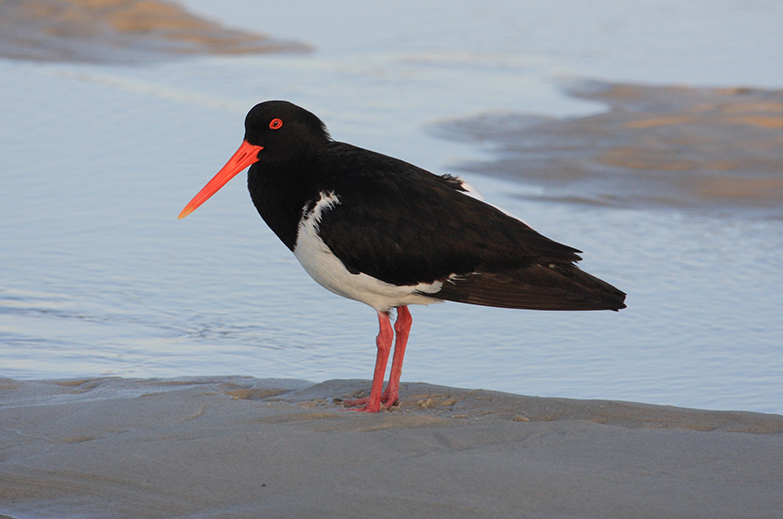Behaviour
Diet
These shorebirds feed on bivalve molluscs prised apart with specially adapted bills. Food is found by probing their long, chisel-shaped bills in the mud. Oystercatchers are one of the few waders that feed their young with this specialised feeding technique.
Breeding
Breeds in pairs with a territory of 200 m defended by both birds. Both sexes share parenting duties. They nest on the sand just above high water mark on beaches, sandbars, margins of estuaries and lagoons. Eggs are well-camouflaged, pale brown with darker brown and black blotches and streaks.
Field Guide
Improve your identification skills. Download your Australian Pied Oystercatcher field guide here!





